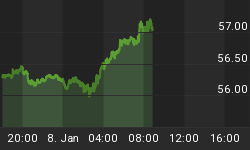This week's FOMC decision is widely expected to keep rates unchanged at 5.25%. We expect the Fed to continue making minor changes to the policy statement acknowledging further signs of slowdown (payrolls, retail sales, ISM, existing home sales, industrial production and Philly Fed survey). Similar to the September statement, the Committee will likely maintain the slightly downgraded inflation directive of: "...reduced impetus from energy prices..." The statement would confirm that the Fed is beginning to factor the role of falling energy prices into its inflation forecast, while preserving cautiousness to prevent any over-optimism in fixed income markets.
As the Fed continues to shift towards a more neutral policy stance and US equity indices, it is worth having a look at the interaction between interest rates, stocks and the US dollar. The charts below show the relationship between the Fed Funds relative to long yields, the S&P500 and the ISM manufacturing survey since January 1998. There were two easing cycles since 1998.The charts suggest the following:
-
It took roughly 6-7 months for the Federal Reserve to begin cutting rates in 1998 and 2001 after the Fed funds rate stood persistently above 10-year yields. After occasionally breaching 10-year yields earlier in the year, the Fed Funds rate finally gained the upper hand in July when the Fed raised to 5.25%. A 6-7 month lead time suggests a Fed rate cut in January of next year as there is no FOMC meeting scheduled in February.
-
The Fed's 1998 rate cuts began 2 months after a peak in stocks, while the Fed's 2001 rate cuts began roughly 4 months after the peak in stocks. Following this 2-3 month rule of thumb, and considering that most technical measures of the S&P500 signal overbought and slowing momentum conditions, the Fed would ease in December or January. Indeed, the relative strength index of overbought/oversold conditions shows the S&P500 weekly chart at its most overbought level since February 2004, after which the index fell into an 8-month bear market, losing 9.0%.
-
It took 3-4 months of sub-50 ISM manufacturing surveys before the Fed began cutting rates. Although manufacturing occupies a decreasing share of the economy, at less then 15%, the erosion in manufacturing jobs remains noticeable on personal consumption. With the latest ISM manufacturing survey falling to 16-month lows at 52.9 in September, and the survey's average monthly decline at 0.9% over the last 6 months, we could see a sub-50 reading as early as November, with the release month in December. Two more surveys of sub-50 readings would be consistent with a January rate or inter-meeting rate cut in February.

While the aforementioned analysis helps us estimate the timing of the first Bernanke rate cut, it contains no indication on the dollar's likely movement. But a look back at the last behavior of the US dollar and the last three Fed easing cycles (1995-96, 1998 and 2001-02) tells us that the US currency reaches a peak about 1 ½ -2 months prior to the first rate cut before starting to decline. These declines ranged from 7.0% in the 1995 easing to 9% in the 2001 easing. In 1998, the dollar fell as much as 12.0% in the 1 ½ months prior to the September 1998 easing largely due to the USDJPY plunge in August-September.

Considering the current dynamics in stocks, ISM manufacturing and 10-year yields continue, we place the probability of a Q1 Fed cut in at 75%, with the January FOMC meeting as the more likely date. Due to the inflationary realities emerging from a possible rebound in oil prices, we do not foresee the rate cut to signal the beginning of a concerted easing policy. Next year may also mark the time when Fed Chairman Bernanke begins pushing his inflation targeting doctrine towards members of the FOMC and the public.
The analysis suggests that the Fed will likely start easing in January and the dollar index peaks at about 1.5-2.0 months prior to the first rate cut. Accordingly, it could be surmised that the dollar peak will take place towards the end of November (FOMC announcement is on Jan 31). But it is highly plausible that the dollar rally of two weeks ago (10-month and 3-month highs against the yen and the euro) may have signaled the peak -- especially following last week's broad sell-off. With this analysis, the 1.5-2.0-month pre-easing lead time suggests a December easing.
An integral part of our intermediate dollar weakness forecast consists of a close assessment of the existing carry trade plays at the expense of the yen and the Swiss franc. These strategies may be in for a rude awakening, especially in light of last week's reported concerns with excessive yen carry trades by the Bank of Japan and the broad improvement in Swiss fundamentals. In absolute terms, the USD remains near the top of the high yielding FX league. But unlike its Australian counterpart--which is pricing further RBA tightening--the greenback is more likely to have seen the end of its tightening cycle. Further, the combination of expected tightening in Japan and Switzerland and slowing growth in the US presents considerable risk of capital loss as currency moves tend to eliminate the yield differential.
Despite the ensuing signs of broad macro weakness in the US, there is reason to believe in the soft US landing, characterized by a slowdown in growth without protracted losses in payrolls and widespread declines in home values curtailing personal consumption. The latter could ensure smoothening the growth transition as long as oil prices show remain below the $70-75 per barrel level.
Given the dollar's existing high yield advantage and the continued upside risks to inflation, we expect the dollar index to fall by no more than 5.0% from its 87.30 peak of October 13, making 83.80-84.0 our year-end target. This translates into the following year-end forecasts: EURUSD 1.2630, USDJPY 114, GBPUSD 1.89 and USDCAD 1.1070.
















